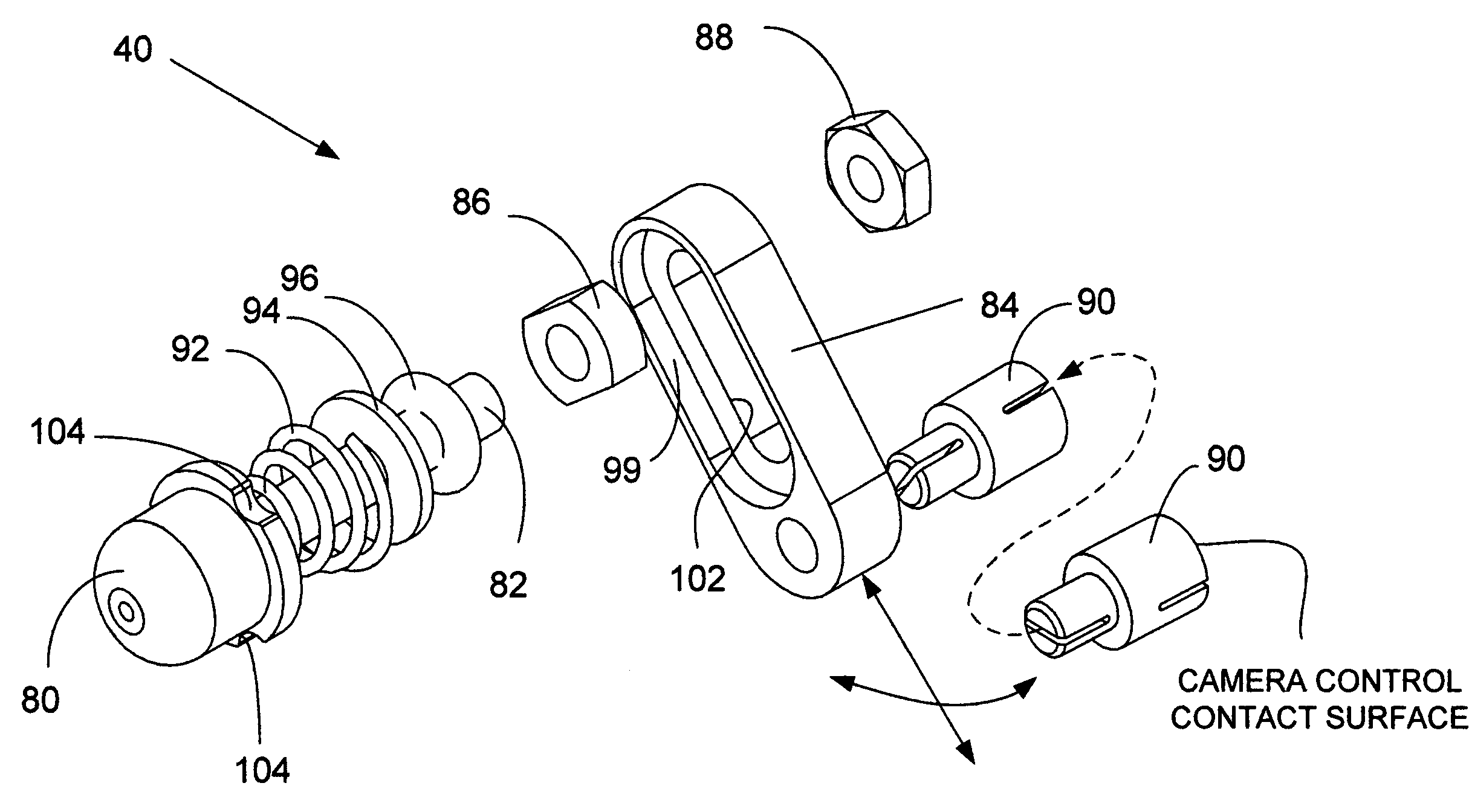Underwater adaptive camera housing
a technology of adaptive camera and underwater housing, which is applied in the field of underwater camera housing, can solve the problems of increasing the price of underwater housings for all cameras, introducing additional complexity and diversity, and reducing the field of view, so as to reduce distortion, prevent back reflection, and increase the field of view
- Summary
- Abstract
- Description
- Claims
- Application Information
AI Technical Summary
Benefits of technology
Problems solved by technology
Method used
Image
Examples
Embodiment Construction
[0022]The present invention relates to an underwater camera housing having an adjustable mechanical control interface to adapt it for use with a broad range of camera brands and models. The cameras may be conventional still and video film cameras, digital still and video cameras, or digital devices provided with photographic capability, such as cell phones or PDAs having integrated digital cameras.
[0023]Reference is now made to FIGS. 1A, 1B, 2 and 3, which show an adaptive underwater camera housing, generally designated at 10, in accordance with the invention, along with a digital camera 15 located inside of housing 10. These figures show, respectively, an upper right front perspective view, a diagrammatic top view, an exploded perspective view, and an upper-rear perspective view of the inventive underwater housing 10 including its control features where FIG. 2 is an exploded perspective view of FIG. 1. As seen in those figures, underwater housing 10 comprises rear and front housing...
PUM
 Login to View More
Login to View More Abstract
Description
Claims
Application Information
 Login to View More
Login to View More - R&D
- Intellectual Property
- Life Sciences
- Materials
- Tech Scout
- Unparalleled Data Quality
- Higher Quality Content
- 60% Fewer Hallucinations
Browse by: Latest US Patents, China's latest patents, Technical Efficacy Thesaurus, Application Domain, Technology Topic, Popular Technical Reports.
© 2025 PatSnap. All rights reserved.Legal|Privacy policy|Modern Slavery Act Transparency Statement|Sitemap|About US| Contact US: help@patsnap.com



